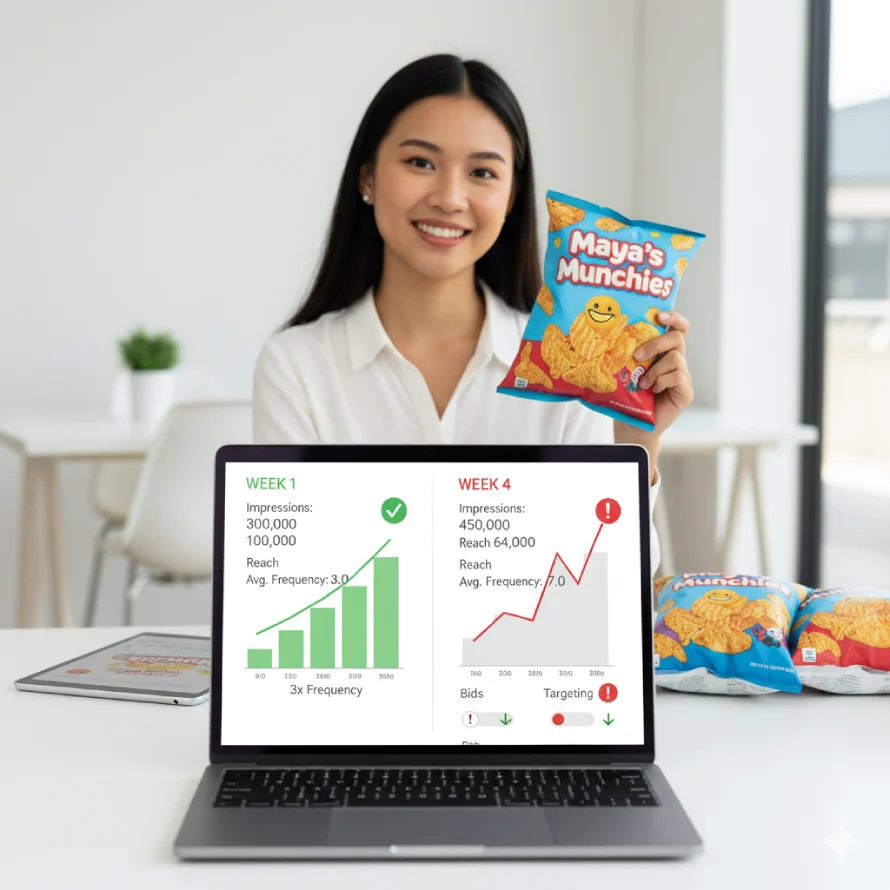The correct answer is Frequency. Why is that right, and why are the other choices not right? In our Miteart blog, I will give you a clear guide you can use for study or your blog. So, no delay. Let’s start.
The question
Which of the following describes the number of times a unique user will see an ad over a given time period?
- Reach
- Engagement rate
- Impression
- Frequency
The correct answer
✅ Frequency
Details in voice:
Why the correct answer is right
Frequency is how often the same person sees your ad in a set time, like a day or week. Google defines it as how many times a unique user saw your ad over a period, and you can cap it so people don’t see the ad too often. This answers the question.
Use frequency with reach and impressions to see both breadth and repetition. Reach shows how many people saw your ads. Frequency shows how often they saw them during that period. Platforms like Google Ads report these together for Display and Video so you can judge message reinforcement and avoid fatigue. A common way to find average frequency is impressions divided by reach.
Why the other options are wrong
Reach
Reach is the number of unique people who saw your ad at least once. It doesn’t tell you how often each person saw it. Reach answers “how many people,” not “how many times per person.”
Impression
An impression is one time an ad is served and starts to display. It doesn’t refer to a specific person and doesn’t combine repeated views. The same person can generate multiple impressions, so you need frequency to measure repeats.
Engagement rate
Engagement rate shows how many people interact with your content—like clicks, likes, comments, or shares—compared to views or followers. It measures interaction quality, not how often the same person saw the ad.
Comparison table
| Term | What it measures | Key idea | Simple example |
|---|---|---|---|
| Frequency | Times a unique person sees the ad in a set time | Repeated exposure | 5 impressions per person this week |
| Reach | Number of unique people who saw the ad | How many people you touched | 10 thousand people reached |
| Impressions | Total ad showings | Volume of views | 50 thousand times shown |
| Engagement rate | Interactions divided by impressions or views | How appealing the ad is | 500 clicks out of 10 thousand views is 5 percent |
Real life example
Maya is launching a new snack brand. She wants people to see it three times a week so they remember the name without getting annoyed. After the first week, she had 300,000 impressions and reached 100,000 people, an average frequency of 3, so she kept the cap. When frequency rose to 7, she lowered bids and tightened targeting to avoid waste.

Relevant resource links
Frequency — definition (and capping) — Google Ads Help.
Unique Reach — definition — Google Ads Help (reach = unique users).
Impressions — definition — Google Ads Help.
Engagements & engagement reporting — Google Ads Help (what counts as an engagement and how it’s measured).
Conclusion
Frequency shows how often the same person sees your ad in a set time. Use it with reach and impressions to balance recall and cost. Watch frequency caps so ads stay useful and not repetitive.
FAQs
How do I calculate frequency?
Divide impressions by reach for the same period.
What is a good frequency?
It depends on your goal and channel. For awareness, 3–5 posts a week can work. Watch for rising costs and falling engagement.
What is a frequency cap?
A cap that prevents a user from seeing your ad more than a set number of times per day or week.
How do reach and frequency work together?
Reach shows how many people you reached. Frequency shows how often each person saw your ad. Together they show your exposure.
